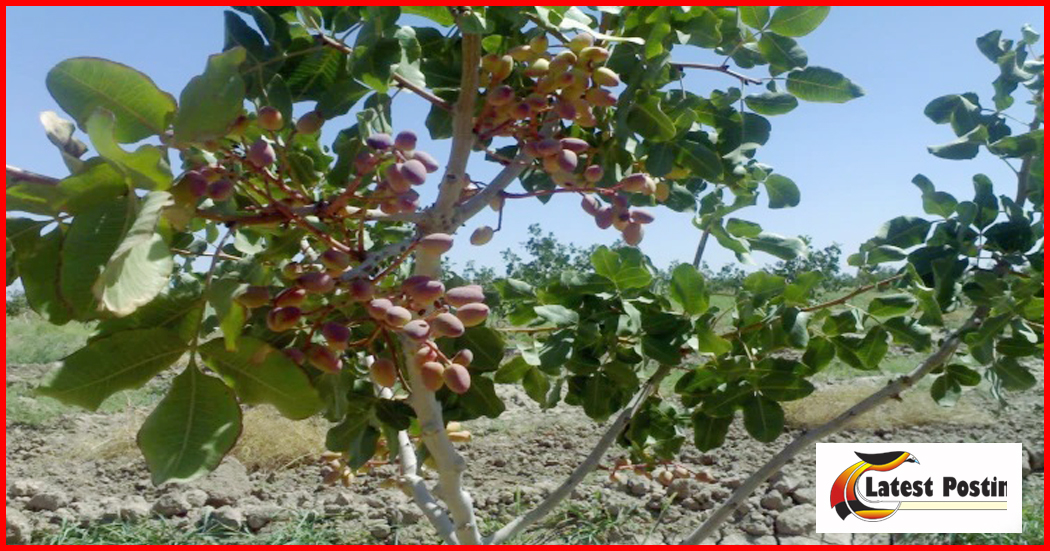The pistachio tree (Pistacia vera) has long been a symbol of resilience and bounty, producing the beloved pistachio nuts that have become a culinary delight worldwide. In this comprehensive guide, we’ll delve into the intriguing world of the pistachio tree, exploring its origins, cultivation, and the health benefits associated with its nuts.
The Origins and History of the Pistachio Tree
The pistachio tree has a rich history that spans centuries and continents. Believed to have originated in Central Asia, particularly in regions of Iran and Afghanistan, the pistachio tree has been cultivated for over 3,000 years. It found its way to the Mediterranean region, where it thrived in the arid climates of countries like Greece and Turkey. Today, the United States is a major producer of pistachios, with California leading the way. The journey of the pistachio tree is a testament to human ingenuity in agriculture and the globalization of food crops.
Anatomy and Growth of the Pistachio Tree
The pistachio tree, a member of the cashew family, is a deciduous tree known for its distinctive gray-barked trunk and compound leaves. These trees are dioecious, meaning individual trees are either male or female, with only the females producing the sought-after pistachio nuts. The cultivation of pistachio trees requires careful consideration of soil type, water availability, and climate. Well-drained soils and a dry climate are ideal for optimal growth. As the pistachio tree matures, it can reach a height of 20 feet or more, forming a dense, umbrella-shaped canopy.

Pistachio Tree Cultivation and Harvesting Techniques
Cultivating pistachio trees is both an art and a science. To optimize yield, farmers implement various techniques, such as grafting desirable varieties onto rootstocks that are well-suited to specific soil conditions. The trees typically begin bearing fruit after five to seven years, with peak production reached at around 15 years. Harvesting pistachios is a meticulous process, as the nuts must be carefully shaken from the branches to avoid damage. The harvested pistachios are then mechanically processed to remove the shells, revealing the delicious and nutritious kernels within.
Nutritional Benefits and Culinary Uses of Pistachios
Beyond their delicious flavor, pistachios boast an array of health benefits. These nuts are rich in essential nutrients, including healthy fats, protein, fiber, and a variety of vitamins and minerals. Studies have shown that incorporating pistachios into a balanced diet may contribute to heart health by lowering cholesterol levels. Additionally, the antioxidants found in pistachios play a role in promoting overall well-being. From snacking to culinary applications, pistachios enhance both sweet and savory dishes, adding a delightful crunch and nutty flavor. Whether enjoyed on their own or as a key ingredient in recipes, pistachios are a versatile and nutritious addition to any diet.

Environmental Impact and Sustainability of Pistachio Farming
In an era where sustainability is paramount, pistachio farming has made significant strides in minimizing its environmental impact. Pistachio trees are well-adapted to arid climates, requiring less water compared to many other crops. Moreover, pistachio orchards contribute to soil conservation, preventing erosion and promoting biodiversity. As consumers become increasingly conscious of the ecological footprint of their food choices, pistachios stand out as a sustainable and environmentally friendly option.

Conclusion:
The pistachio tree, with its storied history, intricate cultivation practices, and nutritional benefits, remains a fascinating subject that captures the imagination of both growers and consumers. As we appreciate the journey of this resilient tree from its Central Asian origins to global cultivation, we also recognize the importance of sustainable practices to ensure the continued prosperity of the pistachio industry. Whether you’re a farmer, a food enthusiast, or someone simply intrigued by the wonders of nature, the pistachio tree is a remarkable example of the harmonious relationship between humans and the environment.
Common FAQs
1. Q: Where do pistachio trees grow best?
A: Pistachio trees thrive in arid climates with well-drained soil. They are commonly grown in regions with hot summers and cool winters. Countries like Iran, Afghanistan, Turkey, and the United States (especially California) are major producers due to their suitable climate and soil conditions.
2. Q: Are all pistachio trees the same?
A: No, pistachio trees are dioecious, meaning individual trees are either male or female. Only female trees produce the pistachio nuts, and it’s essential to have a mix of male and female trees in orchards for successful pollination and nut development.
3. Q: How long does it take for a pistachio tree to produce nuts?
A: Pistachio trees typically start bearing fruit after five to seven years, but the peak of production is reach around 15 years. It requires some patience for growers, but the long-term yield can be rewarding.
4. Q: How are pistachios harvestaed?
A: Pistachios are harvest by shaking the tree branches, causing the ripe nuts to fall to the ground. Mechanical harvesters are often use for efficiency. After harvesting, the nuts are process to remove the outer hull, revealing the edible pistachio kernel.
5. Q: What are the nutritional benefits of pistachios?
A: Pistachios are a nutrient-dense snack. They are high in healthy fats, protein, fiber, vitamins (such as B6), and minerals (including copper and phosphorus). Studies suggest that incorporating pistachios into a balanced diet may contribute to heart health by reducing cholesterol levels.
6. Q: Can pistachio trees grow in my backyard?
A: It depends on your climate. Pistachio trees thrive in areas with hot, dry summers and cold winters. They also require well-drained soil. If your region meets these criteria, and you have enough space for a tree that can reach 20 feet or more in height, growing a pistachio tree in your backyard could be feasible.
7. Q: Are pistachios sustainable?
A: Yes, pistachios are consider a sustainable crop. Pistachio trees are well-adapted to arid environments, requiring less water than many other crops. Pistachio orchards contribute to soil conservation and biodiversity. As consumers become more environmentally conscious, pistachios stand out as a sustainable and eco-friendly choice.
8. Q: Can pistachio allergies occur?
A: Yes, some individuals may be allergic to pistachios. Allergies to tree nuts, including pistachios, can range from mild to severe. It’s crucial for those with nut allergies to be cautious and consult with a healthcare professional if they have concerns.
9. Q: How should I store pistachios to maintain freshness?
A: To keep pistachios fresh, store them in a cool, dry place in an airtight container. Refrigeration or freezing can further extend their shelf life. Proper storage helps prevent the nuts from becoming rancid or losing their flavor.
10. Q: What is the environmental impact of pistachio farming?
A: Pistachio farming has a relatively low environmental impact. The trees are well-suited to arid climates, reducing the need for excessive irrigation. Pistachio orchards contribute to soil conservation, preventing erosion. Sustainable farming practices are increasingly emphasize to ensure the long-term ecological balance in pistachio cultivation.





